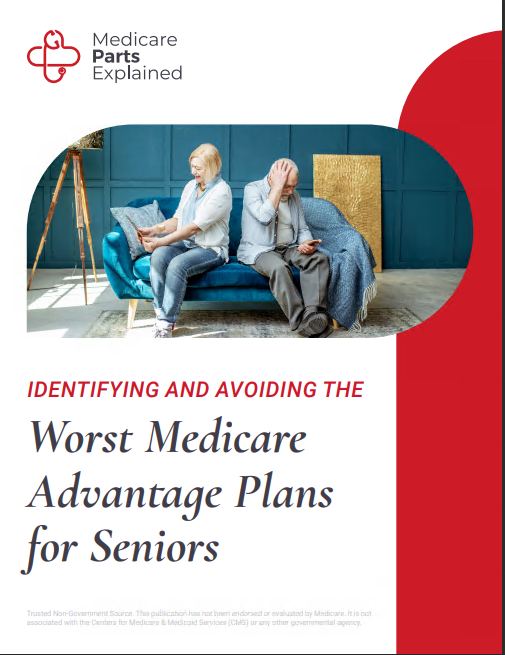Enrollment Process and Eligibility Requirements for Medicare Part B
Introduction to Medicare Part B Enrollment
Enrolling in Medicare Part B is a critical step for individuals approaching retirement age or becoming eligible for Medicare due to disability. Medicare Part B provides coverage for outpatient medical services, preventive care, and durable medical equipment, offering essential healthcare benefits to beneficiaries. In this guide, we’ll explore the enrollment process and eligibility requirements for Medicare Part B, including who is eligible, when and how to enroll, and key considerations for beneficiaries.
Who Is Eligible for Medicare Part B?
Most individuals become eligible for Medicare Part B based on their age and enrollment in Medicare Part A. Specifically, individuals aged 65 and older who are eligible for Social Security or Railroad Retirement Board benefits are automatically enrolled in Medicare Part B. However, certain individuals may need to manually enroll in Part B during their Initial Enrollment Period (IEP) if they are not automatically enrolled. Additionally, individuals under age 65 with certain disabilities or medical conditions may qualify for Medicare Part B coverage based on their eligibility for Social Security Disability Insurance (SSDI) benefits.
Initial Enrollment Period (IEP) for Medicare Part B
The Initial Enrollment Period (IEP) is the first opportunity for individuals to enroll in Medicare Part B. The IEP begins three months before the month of an individual’s 65th birthday and ends three months after the month of their birthday. During this seven-month period, eligible individuals can enroll in Part B without facing late enrollment penalties. It’s essential to enroll in Part B during the IEP to ensure timely access to healthcare coverage and avoid potential gaps in coverage.
Enrollment Periods Periods (SEPs) for Medicare Part B
In addition to the Initial Enrollment Period (IEP), certain individuals may qualify for Special Enrollment Periods (SEPs) to enroll in Medicare Part B outside of the standard enrollment periods. SEPs are available for individuals who experience qualifying life events, such as:
- Loss of employer-sponsored health coverage
- Moving to a new location outside of their plan’s service area
- Changes in Medicaid eligibility
- Qualifying for additional assistance programs
Individuals who qualify for SEPs have the opportunity to enroll in Medicare Part B or make changes to their coverage outside of the standard enrollment periods.
General Enrollment Period (GEP) for Medicare Part B
For individuals who miss their Initial Enrollment Period (IEP) and do not qualify for a Special Enrollment Period (SEP), there is a General Enrollment Period (GEP) for Medicare Part B. The GEP occurs annually from January 1st to March 31st, with coverage effective July 1st of the same year. However, enrolling during the General Enrollment Period may result in late enrollment penalties and delays in coverage, so it’s essential to enroll as soon as possible to avoid these consequences.
Late Enrollment Penalties for Medicare Part B
Individuals who delay enrolling in Medicare Part B may be subject to late enrollment penalties, resulting in higher monthly premiums for Part B coverage. The late enrollment penalty is calculated based on the length of time an individual was eligible for Part B but did not enroll. It’s important to enroll in Part B during the Initial Enrollment Period (IEP) or a Special Enrollment Period (SEP) to avoid these penalties and ensure uninterrupted access to healthcare coverage.
Enrollment Process for Medicare Part B
The enrollment process for Medicare Part B varies depending on an individual’s circumstances. For those who are automatically enrolled in Part B, there is no need to take any action unless they choose to opt out of coverage. However, individuals who need to manually enroll in Part B can do so by:
- Contacting the Social Security Administration (SSA) by phone, online, or in person
- Completing a paper application for Medicare Part B
- Providing required documentation, such as proof of age and citizenship or residency
- It’s essential to follow the enrollment instructions carefully and submit the necessary documentation to ensure timely processing of the Part B enrollment application.
Conclusion: Navigating Medicare Part B Enrollment with Confidence
Understanding the enrollment process and eligibility requirements for Medicare Part B is essential for individuals approaching retirement age or becoming eligible for Medicare due to disability. By knowing who is eligible for Part B coverage, when and how to enroll, and the potential penalties for late enrollment, beneficiaries can navigate the enrollment process with confidence and ensure timely access to essential healthcare benefits. With the support of Medicare Part B, individuals can enjoy peace of mind knowing that their medical needs are covered.
Ready to navigate the enrollment process for Medicare Part B with confidence? Download our associated eBook as a supplemental guide for a detailed breakdown of the enrollment process, including who is eligible, when and how to enroll, and how to avoid late enrollment penalties. Have questions or need personalized assistance? Connect with our team of Licensed Insurance Agents listed on our website for expert guidance tailored to your needs. Take the first step towards securing your healthcare coverage under Medicare Part B today.




